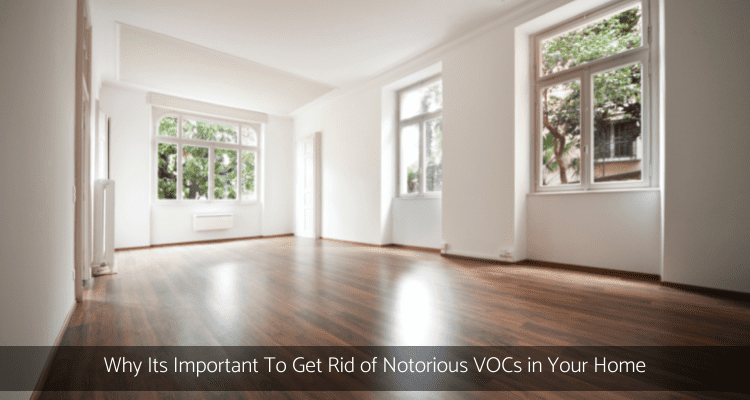You may have heard of VOCs before, which is the term short for Volatile Organic Compounds. VOCs are commonly found in many different household products. Furniture, carpets, caulking around showers and toilets, paint on walls, and the list goes on. These particles also exist in exhaust fumes, cigarette smoke, air fresheners and plastics. Higher concentrations are present in certain materials compared to others, such as varnishes and paint with darker pigments.
VOCs are released into the air as chemical by-products through the process of evaporation or by becoming an off-gas. For some products, such as spray foam insulation, it can take just a few days for most of the VOCs to leave, while for others, it can be a month- or year-long process.
VOCs in your home are a cause for concern because they can pollute your indoor air quality and this can lead to health problems. Inhalation of VOCs is harmful to our health and can result in dizziness and headaches, or can end up being highly toxic.
From carpets and curtains to toys and televisions, computers and printers to cosmetics and perfumes, chemical additives are a hidden fact of modern life. They are rarely labelled and never seen, but they are nearly always there. Of course, they are generally there for a reason: to make plastics soft or stop them breaking down; to carry perfumes; to protect against fire; to kill dust-mites or mould. The problem is that, as a consequence of their use in consumer goods, we are constantly exposed to these chemicals and the hazards they pose. They can escape from products during normal use, or through wear and tear over time, contaminating the indoor environment of our homes. Greenpeace (2008). Data shows that the ongoing use of hazardous chemicals in consumer products is leading to ubiquitous and complex contamination of the home environment.
VOC off-gas is particularly a problem in adhesives, glues and varnishes. The key thing that they all have in common that makes them more of a hazard is formaldehyde, which is a colourless gas that gives off a strong smell. Not only that, depending on how much formaldehyde you’re exposed to, it can cause nasal irritation, a burning sensation in the eyes, or a sore throat. Higher levels of exposure can irritate the airways, making you cough or wheeze.
A Swedish study found that indoor VOCs and formaldehyde may cause asthma-like symptoms discussed by Norbäck et al. 1995. The study concluded there is a need to increase the outdoor air supply in many dwellings, and wall to wall carpeting and dampness in the building should be avoided. Improved indoor environment can also be achieved by selecting building materials, building construction, and indoor activities on the principle that the emission of volatile organic compounds should be as low as reasonably achievable, to minimize symptoms related to asthma due to indoor air pollution.
VOCs pose health risks for all of us since we can be exposed to them in the air that we breathe. For this reason it’s important to minimize the amount of VOCs in the air, and one way we can do this is by picking household products that are safer options. Hard materials like ceramic tile, metal, glass and stone are great because they don’t give off VOCs at all. Hardwood is a better option than vinyl floors and when choosing cabinets, solid wood cabinets with a VOC-free finish are a good idea. It’s also best to forego synthetic carpets and opt for natural carpets for your home.
References
Green Peace, 2003. Consuming Chemicals, (Online). Available: http://www.greenpeace.to/publications/consuming_chemicals_VO_mp.pdf [May 15, 2015]
Norbäck, D., Bj6rnsson, E., Janson, C., Widstr6m, J., Boman, G. 1995, “Asthmatic symptoms and volatile organic compounds, formaldehyde, and carbon dioxide in dwellings” Occupational and Environmental Medicine, 1995;52 pp.388-395. (Online). Available: https://oem.bmj.com/content/oemed/52/6/388.full.pdf [29 May 2015].
This blog post was updated November 9th 2019.






That’s a smart way of thnnkiig about it.
Thank you 🙂